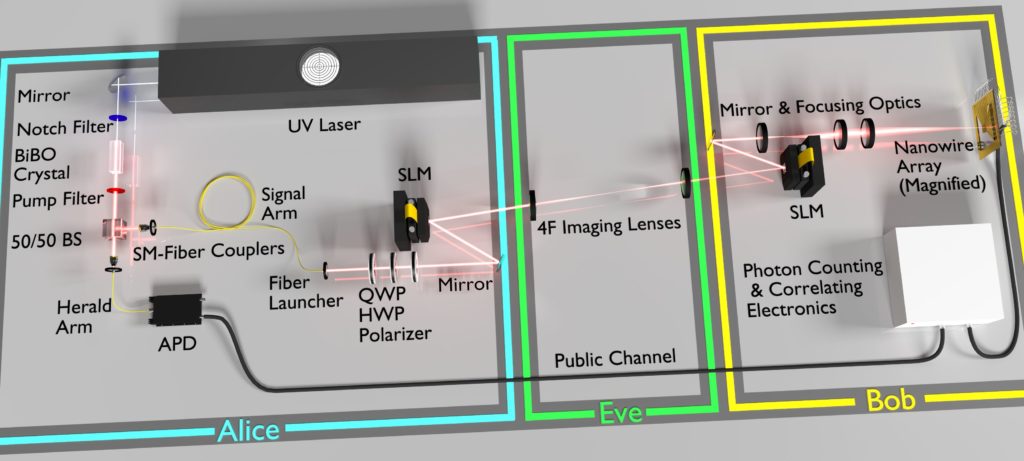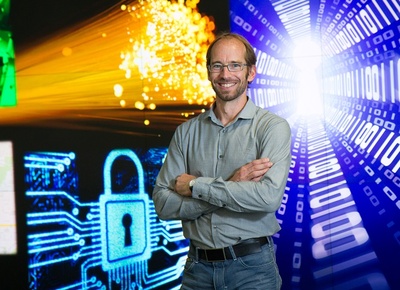I have two news bits and both concern the Canadian universities, the University of British Columbia (UBC) and the University of Toronto (UofT).
First, the Creative Destruction Lab, a technology commercialization effort based at UofT’s Rotman School of Management, is opening an office in the west according to a Sept. 28, 2016 UBC media release (received via email; Note: Links have been removed; this is a long media release which interestingly does not mention Joseph Schumpeter the man who developed the economic theory which he called: creative destruction),
The UBC Sauder School of Business is launching the Western Canadian version of the Creative Destruction Lab, a successful seed-stage program based at UofT’s Rotman School of Management, to help high-technology ventures driven by university research maximize their commercial impact and benefit to society.
“Creative Destruction Lab – West will provide a much-needed support system to ensure innovations formulated on British Columbia campuses can access the funding they need to scale up and grow in-province,” said Robert Helsley, Dean of the UBC Sauder School of Business. “The success our partners at Rotman have had in helping commercialize the scientific breakthroughs of Canadian talent is remarkable and is exactly what we plan to replicate at UBC Sauder.”
Between 2012 and 2016, companies from CDL’s first four years generated over $800 million in equity value. It has supported a long line of emerging startups, including computer-human interface company Thalmic Labs, which announced nearly USD $120 million in funding on September 19, one of the largest Series B financings in Canadian history.
Focusing on massively scalable high-tech startups, CDL-West will provide coaching from world-leading entrepreneurs, support from dedicated business and science faculty, and access to venture capital. While some of the ventures will originate at UBC, CDL-West will also serve the entire province and extended western region by welcoming ventures from other universities. The program will closely align with existing entrepreneurship programs across UBC, including, e@UBC and HATCH, and actively work with the BC Tech Association [also known as the BC Technology Industry Association] and other partners to offer a critical next step in the venture creation process.
“We created a model for tech venture creation that keeps startups focused on their essential business challenges and dedicated to solving them with world-class support,” said CDL Founder Ajay Agrawal, a professor at the Rotman School of Management and UBC PhD alumnus.
“By partnering with UBC Sauder, we will magnify the impact of CDL by drawing in ventures from one of the country’s other leading research universities and B.C.’s burgeoning startup scene to further build the country’s tech sector and the opportunities for job creation it provides,” said CDL Director, Rachel Harris.
CDL uses a goal-setting model to push ventures along a path toward success. Over nine months, a collective of leading entrepreneurs with experience building and scaling technology companies – called the G7 – sets targets for ventures to hit every eight weeks, with the goal of maximizing their equity-value. Along the way ventures turn to business and technology experts for strategic guidance on how to reach goals, and draw on dedicated UBC Sauder students who apply state-of the-art business skills to help companies decide which market to enter first and how.
Ventures that fail to achieve milestones – approximately 50 per cent in past cohorts – are cut from the process. Those that reach their objectives and graduate from the program attract investment from the G7, as well as other leading venture-capital firms.
Currently being assembled, the CDL-West G7 will be comprised of entrepreneurial luminaries, including Jeff Mallett, the founding President, COO and Director of Yahoo! Inc. from 1995-2002 – a company he led to $4 billion in revenues and grew from a startup to a publicly traded company whose value reached $135 billion. He is now Managing Director of Iconica Partners and Managing Partner of Mallett Sports & Entertainment, with ventures including the San Francisco Giants, AT&T Park and Mission Rock Development, Comcast Bay Area Sports Network, the San Jose Giants, Major League Soccer, Vancouver Whitecaps FC, and a variety of other sports and online ventures.
Already bearing fruit, the Creative Destruction Lab partnership will see several UBC ventures accepted into a Machine Learning Specialist Track run by Rotman’s CDL this fall. This track is designed to create a support network for enterprises focused on artificial intelligence, a research strength at UofT and Canada more generally, which has traditionally migrated to the United States for funding and commercialization. In its second year, CDL-West will launch its own specialist track in an area of strength at UBC that will draw eastern ventures west.
“This new partnership creates the kind of high impact innovation network the Government of Canada wants to encourage,” said Brandon Lee, Canada’s Consul General in San Francisco, who works to connect Canadian innovation to customers and growth capital opportunities in Silicon Valley. “By collaborating across our universities to enhance our capacity to turn the scientific discoveries into businesses in Canada, we can further advance our nation’s global competitiveness in the knowledge-based industries.”
The Creative Destruction Lab is guided by an Advisory Board, co-chaired by Vancouver-based Haig Farris, a pioneer of the Canadian venture capitalist industry, and Bill Graham, Chancellor of Trinity College at UofT and former Canadian cabinet minister.
“By partnering with Rotman, UBC Sauder will be able to scale up its support for high-tech ventures extremely quickly and with tremendous impact,” said Paul Cubbon, Leader of CDL-West and a faculty member at UBC Sauder. “CDL-West will act as a turbo booster for ventures with great ideas, but which lack the strategic roadmap and funding to make them a reality.”
CDL-West launched its competitive application process for the first round of ventures that will begin in January 2017. Interested ventures are encouraged to submit applications via the CDL website at: www.creativedestructionlab.com
Background
UBC Technology ventures represented at media availability
Awake Labs is a wearable technology startup whose products measure and track anxiety in people with Autism Spectrum Disorder to better understand behaviour. Their first device, Reveal, monitors a wearer’s heart-rate, body temperature and sweat levels using high-tech sensors to provide insight into care and promote long term independence.
Acuva Technologies is a Vancouver-based clean technology venture focused on commercializing breakthrough UltraViolet Light Emitting Diode technology for water purification systems. Initially focused on point of use systems for boats, RVs and off grid homes in North American market, where they already have early sales, the company’s goal is to enable water purification in households in developing countries by 2018 and deploy large scale systems by 2021.
Other members of the CDL-West G7 include:
Boris Wertz: One of the top tech early-stage investors in North America and the founding partner of Version One, Wertz is also a board partner with Andreessen Horowitz. Before becoming an investor, Wertz was the Chief Operating Officer of AbeBooks.com, which sold to Amazon in 2008. He was responsible for marketing, business development, product, customer service and international operations. His deep operational experience helps him guide other entrepreneurs to start, build and scale companies.
Lisa Shields: Founder of Hyperwallet Systems Inc., Shields guided Hyperwallet from a technology startup to the leading international payments processor for business to consumer mass payouts. Prior to founding Hyperwallet, Lisa managed payments acceptance and risk management technology teams for high-volume online merchants. She was the founding director of the Wireless Innovation Society of British Columbia and is driven by the social and economic imperatives that shape global payment technologies.
Jeff Booth: Co-founder, President and CEO of Build Direct, a rapidly growing online supplier of home improvement products. Through custom and proprietary web analytics and forecasting tools, BuildDirect is reinventing and redefining how consumers can receive the best prices. BuildDirect has 12 warehouse locations across North America and is headquartered in Vancouver, BC. In 2015, Booth was awarded the BC Technology ‘Person of the Year’ Award by the BC Technology Industry Association.
Education:
CDL-west will provide a transformational experience for MBA and senior undergraduate students at UBC Sauder who will act as venture advisors. Replacing traditional classes, students learn by doing during the process of rapid equity-value creation.
Supporting venture development at UBC:
CDL-west will work closely with venture creation programs across UBC to complete the continuum of support aimed at maximizing venture value and investment. It will draw in ventures that are being or have been supported and developed in programs that span campus, including:
University Industry Liaison Office which works to enable research and innovation partnerships with industry, entrepreneurs, government and non-profit organizations.
e@UBC which provides a combination of mentorship, education, venture creation, and seed funding to support UBC students, alumni, faculty and staff.
HATCH, a UBC technology incubator which leverages the expertise of the UBC Sauder School of Business and entrepreneurship@UBC and a seasoned team of domain-specific experts to provide real-world, hands-on guidance in moving from innovative concept to successful venture.
Coast Capital Savings Innovation Hub, a program base at the UBC Sauder Centre for Social Innovation & Impact Investing focused on developing ventures with the goal of creating positive social and environmental impact.
About the Creative Destruction Lab in Toronto:
The Creative Destruction Lab leverages the Rotman School’s leading faculty and industry network as well as its location in the heart of Canada’s business capital to accelerate massively scalable, technology-based ventures that have the potential to transform our social, industrial, and economic landscape. The Lab has had a material impact on many nascent startups, including Deep Genomics, Greenlid, Atomwise, Bridgit, Kepler Communications, Nymi, NVBots, OTI Lumionics, PUSH, Thalmic Labs, Vertical.ai, Revlo, Validere, Growsumo, and VoteCompass, among others. For more information, visit www.creativedestructionlab.com
About the UBC Sauder School of Business
The UBC Sauder School of Business is committed to developing transformational and responsible business leaders for British Columbia and the world. Located in Vancouver, Canada’s gateway to the Pacific Rim, the school is distinguished for its long history of partnership and engagement in Asia, the excellence of its graduates, and the impact of its research which ranks in the top 20 globally. For more information, visit www.sauder.ubc.ca
About the Rotman School of Management
The Rotman School of Management is located in the heart of Canada’s commercial and cultural capital and is part of the University of Toronto, one of the world’s top 20 research universities. The Rotman School fosters a new way to think that enables graduates to tackle today’s global business and societal challenges. For more information, visit www.rotman.utoronto.ca.
It’s good to see a couple of successful (according to the news release) local entrepreneurs on the board although I’m somewhat puzzled by Mallett’s presence since, if memory serves, Yahoo! was not doing that well when he left in 2002. The company was an early success but utterly dwarfed by Google at some point in the early 2000s and these days, its stock (both financial and social) has continued to drift downwards. As for Mallett’s current successes, there is no mention of them.
After reading or skimming through the CDL-West news you might think that the University of Toronto ranked higher than UBC on the Reuters list of the world’s most innovative universities. Before breaking the news about the Canadian rankings, here’s more about the list from a Sept, 28, 2016 Reuters news release (receive via email),
The biggest surprise for me was that China, like Canada, had two universities on the list. I imagine that will change as China continues its quest for science and innovation dominance. Given how they tout their innovation prowess, I had one other surprise, the University of Waterloo’s absence.


